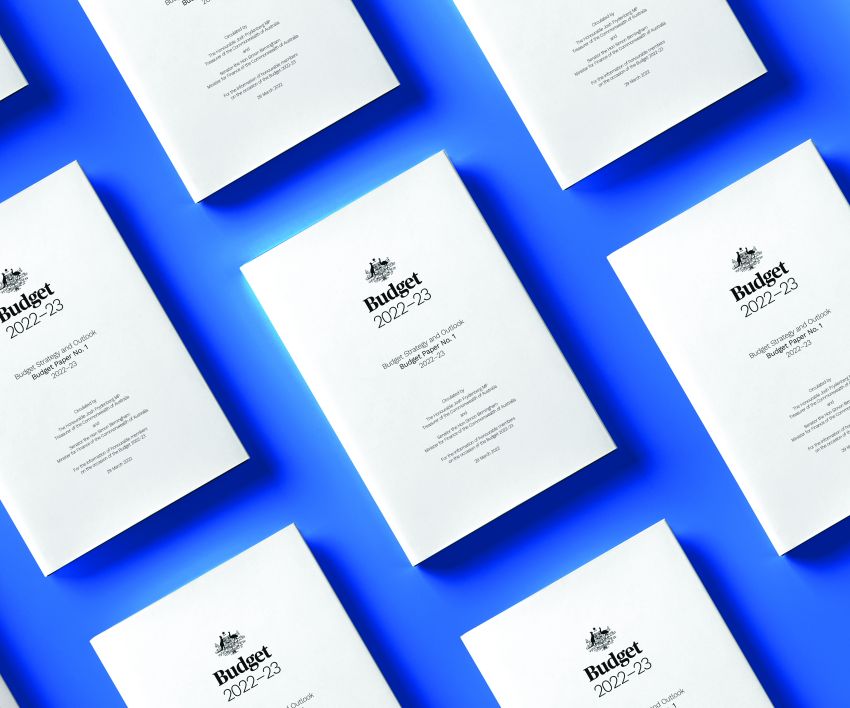
There were no big surprises in the Coalition government’s 2022-23 Budget delivered on March 29. The headline measures had already been revealed by federal treasurer Josh Frydenberg, in particular the $9 billion “cost of living package”.
This includes the $420 additional tax offset for low- and middle-income earners, a one-off $250 payment to pensioners, welfare recipients, veterans and concession card holders, and the halving of the petrol and diesel excise and equivalent customs duty for six months.
Prime Minister Scott Morrison is counting on this pre-election cash splash to buy the Coalition enough votes to win the upcoming federal election, but it is not going to make much of a dent in the rising cost-of-living pressure being faced by most households. This is because wages continue to fall in real terms and pensions remain close to the poverty line, while unemployment payments are even lower.
In his budget speech, Frydenberg said “events abroad are pushing up the cost of living”. But while the war in Ukraine has sharply impacted petrol prices and some grocery items, most households have been feeling the pressure for some time as their biggest bills — rent, power, transport, health and education — soared while incomes stagnated.
According to the Australian Bureau of Statistics, household non-discretionary expenses (costs that eat up the bulk of incomes in poorer to median households) rose by 43.8% between 2005 and 2021, outstripping the official inflation rate of 38.9% over the same period.
Rents and housing prices have been high in capital cities for some time, but even in regional cities rents have risen by 18% over the past two years, creating an acute housing crisis.
Frydenberg claims the billions in tax cuts and deduction, along with corporate handouts, have delivered one of the world’s “fastest and strongest” economic rebounds from the COVID-19 pandemic, and led to Australia’s lowest unemployment rate (4%) since 1974.
In an ABC 730 interview after his budget speech, Frydenberg said that as more people get into work, we will see upward pressure on wages. But as The Australia Institute’s Centre for Future Work senior economist Alison Pennington wrote in the New Daily, this is not what the budget papers forecast.
Pennington noted: “The budget forecasts wage growth of 2% in 2021-22, below inflation which is forecast to grow by 4.25%. That’s a real wage cut of 1.5%.”
Australian Council of Social Service CEO Cassandra Goldie said on budget night that the budget “ignores the big challenges that this country faces right now, which are poverty, inequality and climate change”.
“Much of the assistance goes to people who don’t need it, and too little goes to people who need support.
“One of the biggest spends in this budget is more tax cuts, such as the cuts to the fuel excise and the tax offset. Almost $3 billion goes to reducing the fuel excise, which offers little help at the bowser and would have been much better spent lifting income support and boosting social and affordable housing. The $450 one-off tax offset is overshadowed by the $16 billion annual tax cuts baked into the budget, most of which go to men on the highest incomes.
“The budget does nothing to lift the incomes of people with the least. Whilst we welcome the extension of the $250 bonus payment to people on pensions and allowances, if you’re living on $46 a day, this payment will help for a week or two, but people have to pay the rent 52 weeks a year.”
Looking beyond the deliberately distracting one-off cash splash, the budget is largely business-as-usual for a Coalition government, as it continues to put big business profits ahead of social and environmental needs.
Even as the treasurer bragged about the Coalition’s economic record, families were being told to evacuate their homes in northern New South Wales for the second time in a month because of catastrophic floods.
Yet, incredibly, the budget projects reduced spending on climate change over the next few years from a low $2 billion next financial year to $1.9 billion, then $1.5 billion and $1.3 billion over the next three years. This is a 35% cut over four years.
Climate Council’s Nicki Hutley calculated that this amounts to just 0.3% of total expenditure for 2021-24, falling even lower, to just 0.2% in 2024-26.
This gross climate irresponsibility is aggravated by the fact that — largely due to high prices for Australia’s iron ore, fossil fuel and wheat exports — the government is forecast to receive an extra $126 billion in revenue between 2021-22 and 2025-26.
To add salt to the wound, the Morrison government announced it would continue to raise military spending, with $38 billion going to increasing the number of defence forces personnel by 18,500 by 2040, and $9.9 billion for cyberwarfare capabilities, in addition to the $270 billion already committed for military equipment purchases.
As always, there is plenty of money for corporate welfare and war but peanuts for social justice and the environment.